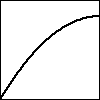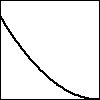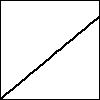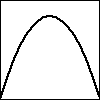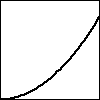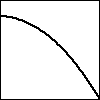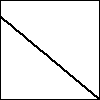We make the assumptions that
\(-0.5 \lt h \lt 0.5\) and
\(h \ne 0\) because
\(h\) cannot be zero (otherwise there is no interval on which to compute average velocity) and because the function only makes sense on the time interval
\(0 \le t \le 1\text{,}\) as this is the duration of time during which the ball is falling. We want to compute and simplify
\begin{equation*}
AV_{[0.5, 0.5+h]} = \frac{s(0.5+h) - s(0.5)}{(0.5+h) - 0.5}\text{.}
\end{equation*}
We start by finding
\(s(0.5+h)\text{.}\) To do so, we follow the rule that defines the function
\(s\text{.}\)
\begin{align*}
s(0.5+h) \amp = 16 - 16(0.5 + h)^2\\
\amp = 16 - 16(0.25 + h + h^2)\\
\amp = 16 - 4 - 16h - 16h^2\\
\amp = 12 - 16h - 16h^2\text{.}
\end{align*}
Now, returning to our computation of the average velocity, we find that
\begin{align*}
AV_{[0.5, 0.5+h]} \amp = \frac{s(0.5+h) - s(0.5)}{(0.5+h) - 0.5}\\
\amp = \frac{(12 - 16h - 16h^2) - (16 - 16(0.5)^2)}{0.5 + h - 0.5}\\
\amp = \frac{12 - 16h - 16h^2 - 12}{h}\\
\amp = \frac{-16h - 16h^2}{h}\text{.}
\end{align*}
At this point, we note two things: first, the expression for average velocity clearly depends on
\(h\text{,}\) which it must, since as
\(h\) changes the average velocity will change. Further, we note that since
\(h\) can never equal zero, we may remove the common factor of
\(h\) from the numerator and denominator. It follows that
\begin{equation*}
AV_{[0.5, 0.5+h]} = -16 - 16h\text{.}
\end{equation*}





